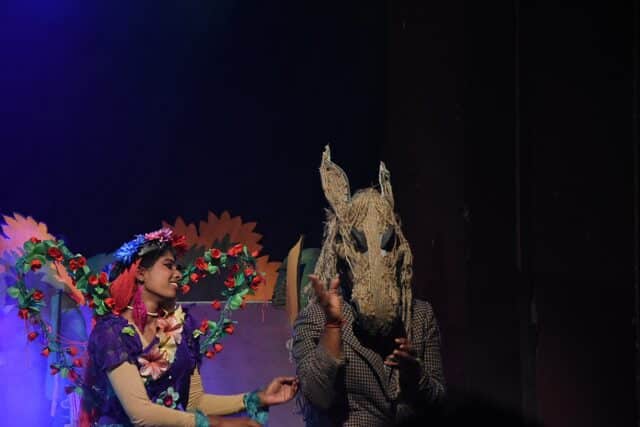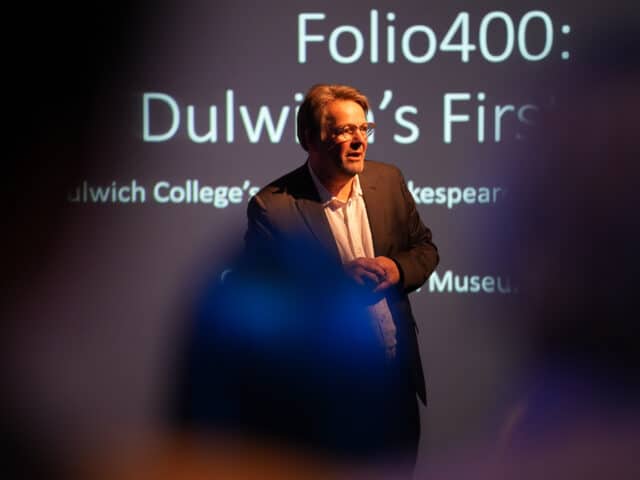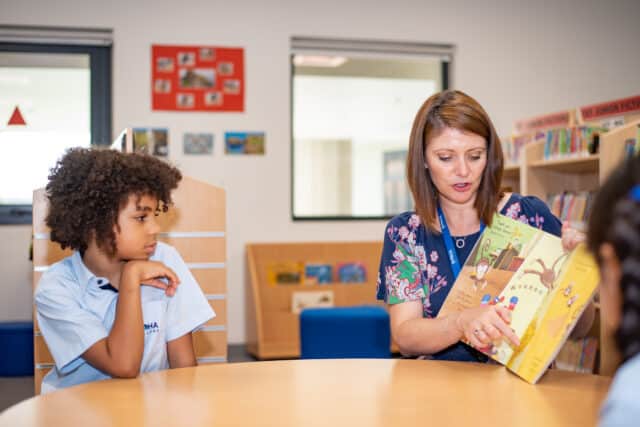Blog
Whose Shakespeare is it Anyway?

Ima Kazmi
Curriculum leader of English, The British School, New Dehli
Read the blog
Picture this:
Students sitting in small circles, buzzing with excitement, as they bounce off ideas regarding the ways in which the characters from Shakespeare’s deliciously complex and whimsical A Midsummer Night’s Dream reflect universal motivations and actions.
Picture this:
Students emitting animated squeals (the noise of learning that’s music to all teacherly ears, for sure!) as they find parallels in the most unlikely places: Finding echoes of Hermia and Lysander’s hyperbolic promises of everlasting love in Greta Gerwig’s neon-pink Barbie and Ken. Locating hints of Demetrius and Helena’s unfortunate power dynamic in the relationships between those toxic couples from the disturbing high-school universe of Euphoria. Linking Oberon’s masculine assertion of authority to all-too familiar leaders of authoritarian regimes who use manipulation and punishment as their favourite coercive tools.
Picture this:
Students filing out of the classroom, suitably armed with recorders and enthusiasm, ready to record their podcasts to decode what drives the emotions and actions of both the mortal Athenians and the immortal fairies and spirits whose chaotic, interweaving lives dominate the action in Shakespeare’s comedy of errors.
How did we get here from the usual groans and moans that have over time become associated with a mandatory Shakespeare text on any Literature curriculum? How did we move past the customary murmurs of ‘I-don’t-know-what-he’s-saying’, ‘who-talks-like-that’, and ‘why-exactly-do-I-need-to-know-this’ to these snapshots of self-driven excitement in the classroom?
For us, the answer to these questions lay in another set of fundamental questions that we asked ourselves: Whose Shakespeare Is It Anyway? Does Shakespeare only belong to the dusty shelves of academic scholarship where an analysis of his portrayal of class dynamics, power and control, desire and ambition, love and courtship, magic and superstition, revenge and guilt, and other universal human constructs, is only possible in the confines of a five-paragraph essay written in the most formal register and with a narrowly defined academic audience in mind?
Or, can we let our students (whose collective identity as a politically aware and culturally literate group of youngsters carries immense power) stake their own claims on Shakespeare’s writing? How can we facilitate and guide them to transport ideas from Shakespeare’s plays outside the classroom space, and trace arcs and parallels with the big, wide world of popular culture, media, and politics around them? In other words, what do we do as educators to let our students feel that Shakespeare belongs to them too? These were the questions that became our starting point of inquiry as we reviewed and reconsidered our approach to planning schemes of work for our mandated Shakespeare texts.

It is a truth universally acknowledged in English Literature corridors that any teacher who decides to include a Shakespeare play into their course must leverage the significant value of using the text as a means to empower students with the vocabulary of literary discourse and introduce them to scholarly perspectives. And yet, the very nature of Shakespeare’s writing – controlled yet amorphous, distinctive yet open to countless interpretations- lends itself perfectly to curating a variety of learning experiences which are rooted in personal identity and lived realities. For a generation seeped in the instant allure of Instagram reels and Snapchat trends that rely heavily on reinvention of existing material in novel ways, the number of ways in which Shakespeare can be made relevant and accessible are limitless. The fact that this could at times look like an entire class of students transferring his words into Taylor Swift’s break-up lyrics just adds to the fun!
Our team discussions gravitated towards the oft-articulated need to strike a balance between exploring big picture ideas whilst retaining the focus on the nitty-gritties of close reading and analysis. In our quest to keep this going, the ‘character podcasts’ became an important learning experience which encouraged students to shape and mould Shakespeare’s writing into their own existing thought-schemas. In the process, students had to make crucial decisions regarding what fits, what stands out, what possible significance this convergence and divergence carries, what universal messages does the text convey, and which factors determine an audience’s reaction to the world conjured through Shakespeare’s words. Such opportunities to review material, find connections, experiment with forms (our student’s podcasts ranged from ‘late night chat shows’ to ‘conversations with a therapist’) and arrive at decisions helped facilitate critical thinking and creativity, and gave students a chance to personalize their learning in a meaningful yet fun manner.
The Bard of Avon, in his infinite wisdom, wrote: “To thine own self be true”. It’s never a bad idea for educators to remind each other that this injunction to be our true authentic selves applies as much to air-pod wearing 14-year-olds navigating Shakespearean waters, and not just to ‘experts’ and ‘scholars’. So, whose Shakespeare is it anyway? Yours, mine, theirs, and ours!


